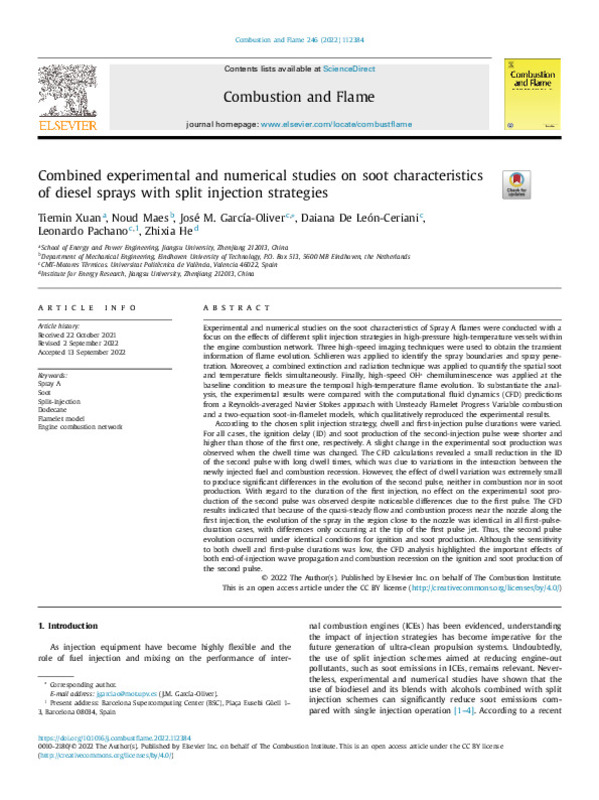JavaScript is disabled for your browser. Some features of this site may not work without it.
Buscar en RiuNet
Listar
Mi cuenta
Estadísticas
Ayuda RiuNet
Admin. UPV
Combined experimental and numerical studies on soot characteristics of diesel sprays with split injection strategies
Mostrar el registro completo del ítem
Xuan, T.; Maes, N.; García-Oliver, JM.; De Leon-Ceriani, D.; Pachano-Prieto, LM.; He, Z. (2022). Combined experimental and numerical studies on soot characteristics of diesel sprays with split injection strategies. Combustion and Flame. 246:1-17. https://doi.org/10.1016/j.combustflame.2022.112384
Por favor, use este identificador para citar o enlazar este ítem: http://hdl.handle.net/10251/194639
Ficheros en el ítem
Metadatos del ítem
| Título: | Combined experimental and numerical studies on soot characteristics of diesel sprays with split injection strategies | |
| Autor: | Xuan, Tiemin Maes, Noud He, Zhixia | |
| Entidad UPV: |
|
|
| Fecha difusión: |
|
|
| Resumen: |
[EN] Experimental and numerical studies on the soot characteristics of Spray A flames were conducted with a focus on the effects of different split injection strategies in high-pressure high-temperature vessels within the ...[+]
|
|
| Palabras clave: |
|
|
| Derechos de uso: | Reconocimiento (by) | |
| Fuente: |
|
|
| DOI: |
|
|
| Editorial: |
|
|
| Versión del editor: | https://doi.org/10.1016/j.combustflame.2022.112384 | |
| Código del Proyecto: |
|
|
| Agradecimientos: |
|
|
| Tipo: |
|









